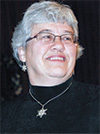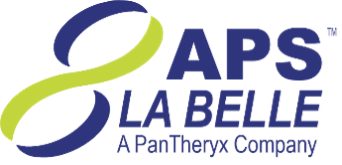The great idea was the Dairy Excellence Foundation’s Adopt-A-Cow program – a program that has been running for several years. It was initiated by a former dairy education program manager’s child coming home from school with news that his class had adopted an endangered animal. The mom thought if adopting that animal was a good idea, why not adopt a cow? The program was birthed, and enjoyed good success, with 900 classrooms taking part a year ago.
Brittany Snyder has been the dairy education program manager for the past three years. She grew up on a dairy operation and has a passion for dairy. She has been thrilled and excited to see the way the program has taken flight this school year, calling it a “pretty neat adventure” with “opportunities we didn’t even dream of.” This year, participation grew to over 70,000 classrooms with an estimated 1.6 million students. Classes from 45 other countries also took part, with one class from the Ukraine proving to be very interactive. Snyder states, “COVID-19 had a lot to do with that [growth].”
Twenty-two U.S. farms take part in the program with about four calves per farm. Each calf is adopted by many classes. The program runs from October to May, starting with a 14-point slide presentation with lesson plans over several subjects and on different levels. Updates occur in October, December and February or March, starting with the birth announcement of the calf. Emails – called “Sunday Funday” – arrive every two weeks with more suggestions for the classes. Teachers choose how much of the material they want to use. At the end of the year, the classes get live chats with “their” farmer.
Snyder says she feels the program is changing consumer behavior in that kids identify with their adopted cow and then use more dairy products. She also asserts this program would not happen without their partners. Funding is partly from the checkoff fees and much also comes from private donors.
Maureen Barrett, an early childhood education (ECE) assistant for the kindergarten class at Gordon B Attersley Public School, Oshawa, Ontario, Canada, has nothing but praise for this program. She saw a post about it on Facebook a year ago and thought it sounded like fun. Her class adopted Adele, a Holstein calf from Katie Sattazahn’s farm. Adoption papers for Adele were provided, and Barrett printed and laminated a copy for each child in the class.
She found the kids to be “super-pumped” by what they were learning in the areas of math, science, literature and vocabulary. A bulletin board held photographs and information about the calf and her mother, Amber. The kids compared birthweights of a calf with those of human babies, learned about what cows and calves need for health, what comfort features are used in barns and the amount of feed and water a cow needed. They drew blueprints for a model barn and used shoeboxes to build their barns. They included grooming brushes and fans made from whatever items they found to use. They even made cow figures and Farmer Katie figures. Barrett found the kids played frequently with their barns and wrote stories about it.

Parents were amazed at the knowledge their kids were gaining and learned new things themselves from the young students. Barrett was thrilled with the enthusiasm, engagement and willingness to learn exhibited by the children. Among other things, the kids taste-tested dairy products and learned to make butter and ice cream and were able to taste these, too (after teachers checked with parents concerning dairy allergies).
Barrett augmented this program with some videos to see what happens to milk – from careful testing at each stage, trucking, pasteurization and processing into various dairy products. They also watched a video of cows being milked in a parlor.
Barrett wrote a letter to Farmer Katie. Here are some excerpts that show the impact the program has had on her students:
“We have been having so much fun learning about calves, what they need to live, the equipment they have in the barn, all the work you do to take care of them. We all live in the city, so learning about cows is so exciting. We are still playing with the barns and cows that we made … We have tasted different milk and dairy products. Some of the students told us that when we were tasting the white and chocolate milk that they didn’t like white milk. We had them taste it, and they liked it and they said that it was the best milk ever because it was from Amber … now their parents say they are drinking white milk again. Thank you, Amber. … Thank you for teaching us so much about Adele and the dairy world. We will never forget all that we have learned. You have left an important imprint on us. We can’t wait for our livestream with you to see Adele.”
Katie Sattazahn is the Pennsylvania farmer whose calf was adopted by Barrett’s class in Ontario. She says it is important for farmers to tell their story, not those who are opposed to animal agriculture. “We are familiar with the anti-animal ag community as well as the vegan products coming into production now. We do not need these companies telling our story for us,” she says.
Sattazahn is committed to getting the right information to future consumers; she knows healthy habits start young, so getting that information to school age kids helps them understand how nutritious dairy products are and the value they get when they purchase them. It is also important for the kids – and their parents and teachers – to know the animals and land are well cared for.
Sattazahn’s part in the program is to provide the information on the calf and then commit to time for video chats with the classes involved. During these chats, she walks around the farm showing various features like cow comfort devices and talking about raising the calves, including their diet, transition to weaning, bedding information and ways of caring for them. She shows the kids how they work to produce a high-quality, nutritious and affordable product while also keeping sustainability in mind. Some of the features include information about recycling (sand and water). She finds it interesting that the kids are most fascinated by the number of animals cared for on her farm and the volume of milk produced each day per cow.
The class in Oshawa recently had their live video chat with Sattazahn, a visit that Barrett described as “amazing.” The children were “super-excited” to be able to actually see their calf Adele and to meet Katie Sattazahn via video, and to have a virtual tour of the farm where they lived.
The Adopt-A-Cow program is unique to the U.S. Center for Dairy Excellence, although similar programs exist throughout North America. Teachers can also take advantage of a number of programs available in that teach nutrition, dairy education, food regulations and more. ![]()
PHOTOS: A virtual-based program connects schools and farms to promote dairy. Photos provided by Maureen Barrett.
Alice Guthrie is a freelance writer from Hagersville, Ontario, Canada.







